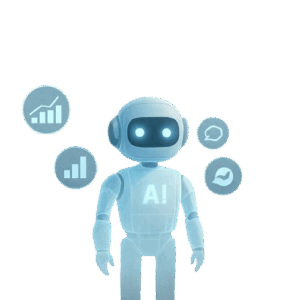Apply For Scholarship
Apply For Scholarship
Data science has rapidly transformed into one of the most lucrative and intellectually rewarding careers of the decade. In 2025, this field is not only growing it’s evolving. With the integration of generative AI, real-time analytics, and cloud-native tools, becoming a successful data scientist now requires more than just mastering Python and statistics. Whether you’re a student, a digital marketing professional, or someone considering a career pivot, this career roadmap will guide you step-by-step on how to become a data scientist in 2025.

Gone are the days when data scientists were only expected to crunch numbers. In 2025,
their roles have expanded to include:
● Data exploration and cleaning
● Model development and deployment
● Data storytelling and visualization
● AI ethics and responsible usage
● Collaborating with business, marketing, and engineering teams

You’ll need to build a strong foundation in both technical and analytical skills. Here's what’s essential in 2025:
1. Programming & Tools
● Python (still the #1 language)
● SQL (essential for querying databases)
● R (optional, but useful for statistical modeling)
2. Machine Learning & AI
● Supervised/unsupervised learning
● Deep learning (CNNs, RNNs, Transformers)
● Generative AI tools (e.g., ChatGPT, Claude)
3. Math & Stats
● Probability theory
● Linear algebra
● Statistical inference
4. Data Engineering Basics
● ETL pipelines
● Cloud platforms (AWS, GCP, Azure)
● Tools like Apache Spark, Airflow, and BigQuery
There’s no single way to become a data scientist. You can choose any of the following:
● Online courses (Coursera, Udacity, DataCamp)
● Bootcamps (like Springboard, General Assembly)
● Master’s programs (optional, but valuable for research roles)
Suggested 6-Month Roadmap:
Month Focus Area
1–2 Python, SQL, statistics
3 ML models using Scikit-learn, TensorFlow
4 Data visualization (Tableau, Power BI, Plotly)
5 Work on Kaggle or GitHub projects
6 Learn model deployment, APIs, and cloud basics
Don’t just learn—build. Real projects are more valuable than certifications.

Employers want to see proof that you can apply your skills. Consider creating projects like:
● Customer churn prediction
● Stock price forecasting
● NLP sentiment analysis
● Resume screener using GPT or BERT
● Real-time dashboards using Streamlit
Upload these to GitHub and create case studies on LinkedIn or Medium.
Bonus Tip: Add a “Projects” section to your resume with links.
Data science in 2025 is deeply connected to business outcomes. Learn how to:
● Ask the right business questions
● Translate insights into strategy
● Communicate clearly with non-technical stakeholders
Think like a consultant who uses data not just a coder.
With generative AI becoming a part of data workflows, you’ll benefit from learning how to:
● Use ChatGPT or Claude for exploratory analysis
● Generate synthetic data for rare-event modeling
● Automate repetitive tasks (code generation, documentation, etc.)
Also, explore how to fine-tune LLMs and integrate them into real-world applications.
When you’re ready, focus on:
● Resume building (highlight tools, projects, outcomes)
● LinkedIn branding (write posts, share work)
● Mock interviews (for both technical and behavioral rounds)
Common Job Titles in 2025:
● Data Scientist
● Machine Learning Engineer
● Data Analyst (entry-level)
● AI/ML Product Analyst
● MLOps Engineer
Network with professionals via meetups, LinkedIn, and AI communities like
Hugging Face or Kaggle.
Once you have the basics, it helps to specialize. Consider focusing on:
● Computer Vision
● Natural Language Processing (NLP)
● Time Series Forecasting
● AI in Marketing or Finance
● MLOps & Deployment
Specialists often command higher salaries and work on more advanced problems.
Becoming a data scientist in 2025 is a mix of skill-building, practical experience, andstrategic positioning. You don’t need to know everything just enough to solve real problems and continuously adapt. If you’re committed, curious, and willing to learn by doing, there’s no better time than now to start.
No. While a degree can help, it’s not mandatory. Many successful data scientists transition from non-technical backgrounds by learning through online courses, bootcamps, and hands-on projects.
You’ll need strong foundations in Python, SQL, statistics, machine learning, and data visualization tools. Additionally, cloud computing, data engineering basics, and generative AI tools are crucial.
On average, with consistent effort, you can build the required skills in 6–12 months. A 6-month structured roadmap—covering Python, ML models, visualization, projects, and deployment—can prepare you for entry-level roles.
Employers prefer candidates with real-world projects. Examples include customer churn prediction, NLP-based sentiment analysis, resume screening with GPT, and dashboards using Streamlit or Tableau.
Follow AI communities like Kaggle and Hugging Face, read research papers, attend webinars, and experiment with generative AI tools like ChatGPT. Networking on LinkedIn and sharing your work also helps you stay relevant.
Asia’s Leading Digital Marketing & Data Science Institute
A comprehensive methodology with the best curriculum, designed according to current corporate demands and needs. [Privacy-Policy]
Copyright © NDMIT Edusoft Private Limited